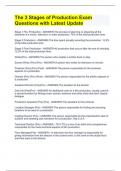Summary
Summary Tudors - Unit 3: How the Tudor government dealt with rebellions
- Course
- Institution
- Book
A table that clearly and succinctly outlines how each Tudor monarch dealt with the 20 rebellions mentioned in the 'Access to History' textbook.
[Show more]













